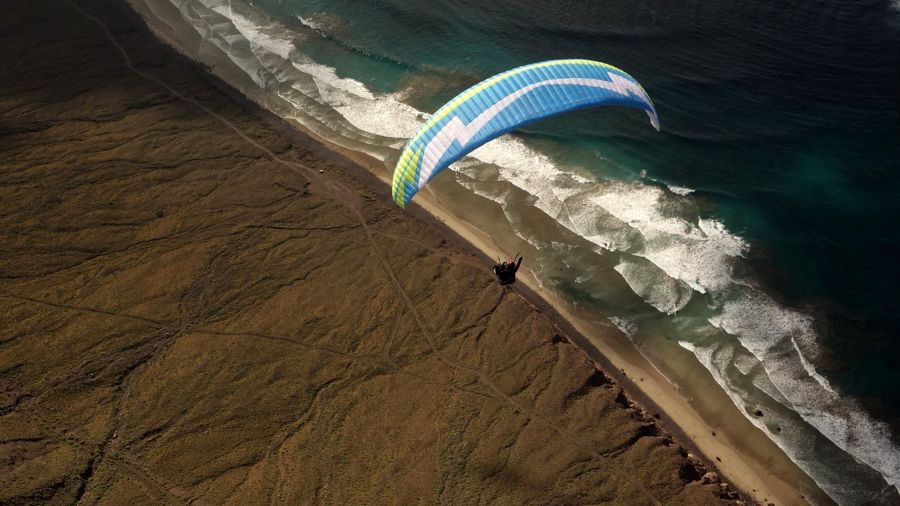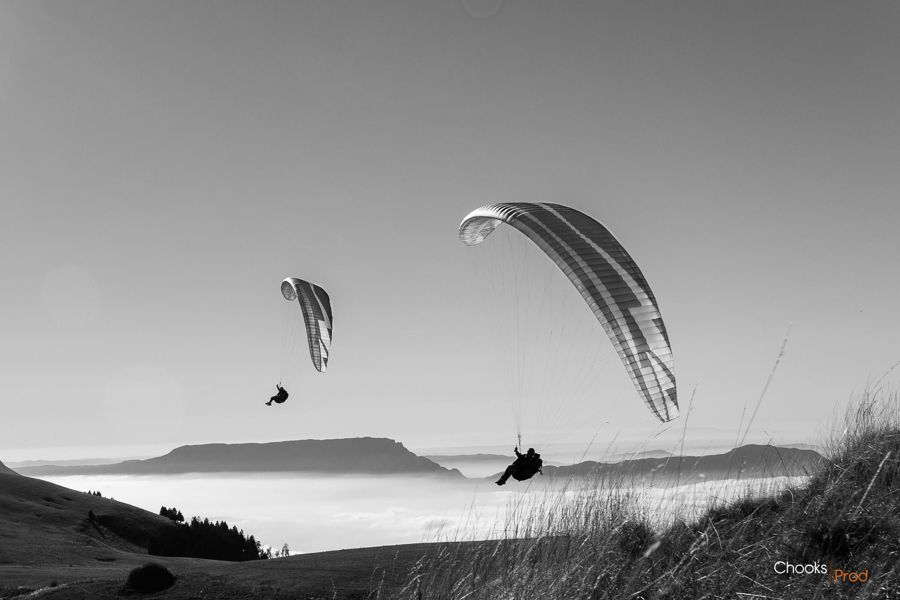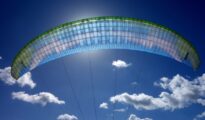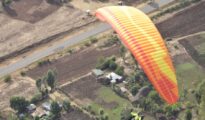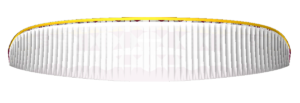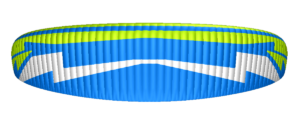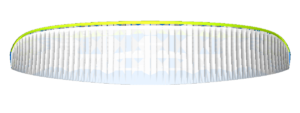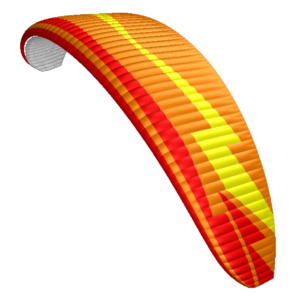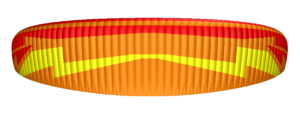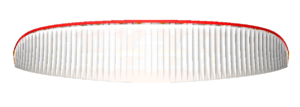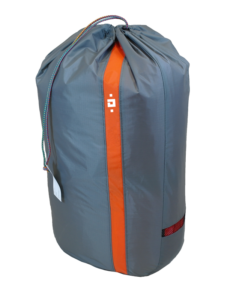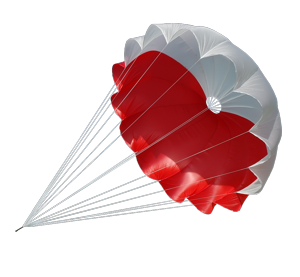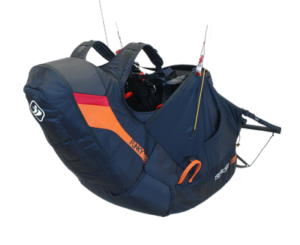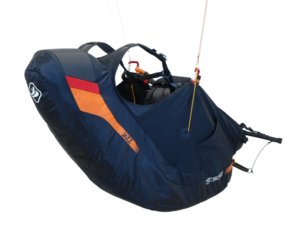Colt 2
Colt 2
Colt2 is an EN C paraglider of 6,2 aspect ratio and 61 cells.Since it was designed for actively flying pilots, it’s perfect for both cross-country and competition flying. This canopy features high passive
safety accompanied with great performance and perfect handling.

Design and purpose
Colt 2 is designed with experienced pilots in mind who like new challenges, but appreciate safety and pure joy of flight.
We’ve been refining the canopy for a long time in order to present D class agility and performance along with C-class safety and easy handling. Optimal balance of passive safety and performance of the original Colt has been further improved in this version.
The original Colt was enhanced with modern solutions tried in the Coden: shark nose and three sections of rods (Flexi Edge technology). The wingtip was modified too. Airfoil of the Colt 2 despite its high lift to drag ratio has some traits of a reflex profile too, used optimally for the paraglider’s class, intended use and performance. The aspect ratio was carefully balanced in order to fully utilize merits of the new ideas, while retaining the most optimal proportion of passive safety and performance, which we believe to be the best in this paraglider class.
 See movie
See movie
- The inner reinforcements, integral rods and mini-ribs take care of exact aerofoil reproduction and stability.
- Carefully planned and redesigned three-row rigging creates distinctly smaller drag, thus improving overall performance.
- Mini-ribs in the trailing edge keep it in shape and decrease ballooning, so the airflow is much improved.
All these concepts result in great performance – the paraglider has finesse until recently to be found only in canopies with much bigger aspect ratio, in addition it’s fast and steady when accelerated. Colt 2 turns smoothly and obediently, and since this is combined with meagre sink it will let you easily stay in weak and narrow thermals.
As in other our paragliders, the risers, of the Colt2 constitute a complete, comfortable and carefully thought out “control panel” based on narrow (12 mm) Aramid risers, where each instrument is placed exactly where it should be and works as it should.
Soft, adjustable brake handles with neodymium magnets will be greatly appreciated during long flights, for which the Colt2 was designed.
 See movie
See movie
CColt2 is produced in new technology, utilizing capabilities of precise laser cutter. All stages of the production process take place as our Polish plant under close supervision of the designer himself, thus ensuring highest European quality.
Design solutions, technologies and other functionalities are listed below in the Technologies section.
Construction solutions
Technologies, concepts
Risers functionality
Used solutions
Parameters
Weight ranges

TECHNICAL DATA
| Name/Size | Colt 2 – 21 | Colt 2 – 23 | Colt 2 – 25 | Colt 2 – 27 | Colt 2 – 30 |
| Certification EN/LTF | C | C | C | C | C |
| Number of cells | 61 | 61 | 61 | 61 | 61 |
| Surface area (flat) [m2] | 21.20 | 23.20 | 25.00 | 27.20 | 30.00 |
| Surface area (projected) [m2] | 18.14 | 19.86 | 21.40 | 23.28 | 25.67 |
| Span (flat) [m] | 11.47 | 11.99 | 12.45 | 12.99 | 13.64 |
| Span (projected) [m] | 9.20 | 9.62 | 9.99 | 10.42 | 10.94 |
| Aspect ratio flat/projected | 6.2 / 4.66 | ||||
| Sink rate [m/s] | Min = 1.0 (+/- 0.1 m/s) | ||||
| Speed* [km/h] | Trim = 38, Max = 54 (+/- 2 km/h)* | ||||
| Max chord [cm] | 233.3 | 244 | 253.3 | 264.2 | 277.4 |
| Min chord [cm] | 55 | 57.5 | 59.7 | 62.2 | 65.4 |
| Distance pilot to wing [m] | 7.11 | 7.44 | 7.72 | 8.05 | 8.46 |
| Total lines length [m] | 233.48 | 244.67 | 253.98 | 264.92 | 278.23 |
| Canopy weight [kg] | 4.51 | 5.03 | 5.19 | 5.52 | 6.16 |
| Take-off weight** [kg] | 60-85** | 65-90** | 85-105** | 95-120** | 110-130** |
| Lines | Edelrid Technora | ||||
| Cloth | Dominico / Porcher | ||||
* Speeds are given as estimated for the middle wing size and the middle of its weight range. These speeds can vary within +/- 2 km/h depending on the size, take-off weight and additional factors such as air pressure and temperature.
** The basic rule is to choose the size of the wing so that the take-off weight is in the middle of the weight range. Less weight on the wing (lower range take-off weight) can be considered for foot take-off, when flying in calmerconditions, or when we want to improve economy. More experienced pilots who want to fly dynamically, have higher speed and fly in more demanding wind conditions can consider greater wing loading (take-off weight in the upper range). This is a common option among trike users.
Note – the canopy significantly changes its behavior with increasing wing loading. The greater the loads, the greater skill and concentration of the pilot are required.







